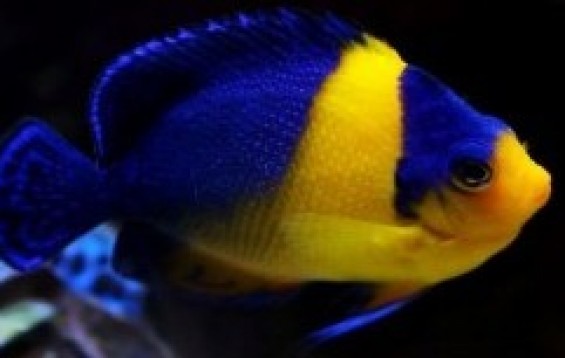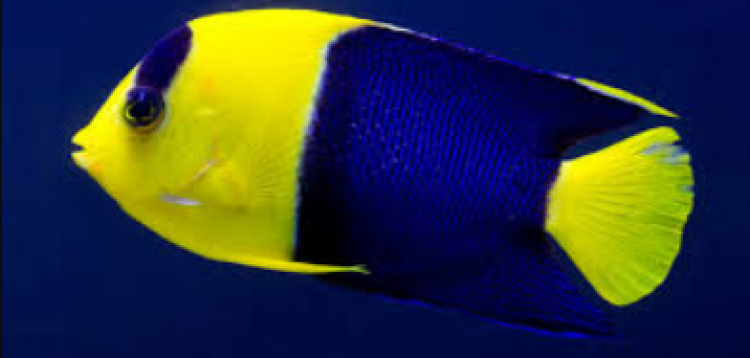- Name:
Venusta Angelfish
(View AKA's) - Family: Angelfish
- Species: Angel Large
- Scientific Name: Paracentropyge venusta


More Details
General info about Venusta Angelfish
Venusta angelfish are somewhat rare dwarf angelfish that has a yellow body and face area, with a triangular blue patch on top of the head, and a blue colored saddle area that starts near the front dorsal fin and extends overs the rear portion of the body and caudal fin. Anal and pelvic fins are edged in blue. These angelfishes are usually found to inhabit steep outer coral and rocky reef slopes from 20 to over 130 feet (6 – 40 m) in depth. Usually observed singly, almost always upside down in reef caves.
Venusta Angelfish Diet & Nutrition
In their natural environment, the Venusta angelfish are known to feed on sponges, tunicates, and various crustaceans. In captivity, these angelfishes may be fed with frozen foods including fortified brine shrimp, mysis, and meals containing sponge matter or angelfish food preparations to be offered several times a day.
Determining Sex of Venusta Angelfish
No sexual dimorphism observed with this angelfish species, however, male Venusta angelfish are larger than the females.
Breeding & Spawning Venusta Angelfish
Not much is known on the details of breeding and spawning for this angelfish species, however, they are known to form hybrids with Centropyge multifasciata. Some aquarists have observed this species to spawn 2 hours before lights out in the tank, and can release 300 to 1000 eggs per spaawning.
Venusta Angelfish Origin
The Purple Masked Angelfish are known to be distributed from Japan to the northern Philippines.
Caution with Venusta Angelfish
It is a fish that can be quite shy when first introduced to the aquarium, and may take a little time to settle, once accustomed in the tank, it can be rather territorial when new species (particularly docile/peaceful fish) are introduced to the tank afterwards. They are also known to pick on invertebrates found on live rocks.
Acclimating Venusta Angelfish
The Venusta Angelfish is best acclimated to a dimly lit aquarium with live rock to provide hiding places to retreat in when feeling threatened.
Relevent Articles
Original Detail
| Name | Species | Family | Scientific Name | More Detail | Added by |
|---|---|---|---|---|---|
| Venusta Angelfish | Angel Large | Angelfish | Paracentropyge venusta | Venusta angelfish are somewhat rare dwarf angelfish that has a yellow body and face area, with a triangular blue patch on top of the head, and a blue colored saddle area that starts near the front dorsal fin and extends overs the rear portion of the body and caudal fin. Anal and pelvic fins are edged in blue. These angelfishes are usually found to inhabit steep outer coral and rocky reef slopes from 20 to over 130 feet (6 – 40 m) in depth. Usually observed singly, almost always upside down in reef caves. | PalaciosAn |


